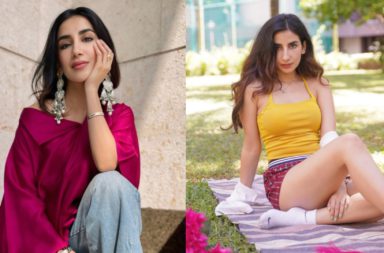ProudlyMe: Embracing self-love & unapologetic authenticity.
Drag culture refers to a vibrant and diverse subculture that celebrates gender performance and theatricality. It is primarily associated with the art form of drag, in which individuals, often but not always male, dress in extravagant and exaggerated clothing and makeup to perform on stage. Drag artists, also known as drag queens or drag kings, often lip-sync to songs, perform comedy routines, or engage in other forms of entertainment. Drag culture in India has a unique and dynamic history, blending traditional gender performances with contemporary expressions of drag. Today we will understand the trajectory of Drag as an art form while knowing more about Drag Artists.

The History of Drag Culture
Drag culture has a rich history that spans several decades and is also deeply rooted in LGBTQIA+ communities. While it’s difficult to pinpoint its exact origins, forms of gender-bending performance and cross-dressing can be traced back to ancient civilizations. During the Elizabethan era in the 16th century, male actors took on female roles, leading to a form of gender performance akin to drag.
In the 1920s and 1930s, the Harlem Renaissance era saw the rise of drag balls and the “pansy craze,” where performers known as “drag queens” entertained audiences with their flamboyant acts.

During the mid-20th century, LGBTQ+ bars and underground clubs became spaces where drag performers could express themselves. The late 20th century witnessed the rise of drag pageants and competitions, providing platforms for drag performers to showcase their skills. The 1990 documentary film “Paris Is Burning” brought attention to the vibrant drag and ballroom culture of New York City’s African-American and Latinx LGBTQIA+ communities. In recent years, shows like “RuPaul’s Drag Race” have gained immense popularity, bringing drag culture into the mainstream.
Also Read: Create AI-Powered Apps in Minutes with “Brancher.ai” The Revolutionary Platform!
Drag Culture in India
Drag culture in India has a unique and dynamic history, blending traditional gender performances with contemporary expressions of drag. Traditional Indian performing arts, such as Bharatanatyam and Kathak, have often included men playing female roles.

Hijras and Jogappas are transgender communities in India with their own distinct performance traditions. While their practices are distinct from contemporary drag culture, they have influenced and intersected with it. In recent years, drag culture in India has gained visibility and popularity and they often use their performances to challenge gender norms, express their identities, and entertain audiences.
Drag Culture as a catalyst to activism
Drag in India often intersects with activism, especially in the LGBTQIA+ rights movement. Drag performers have used their platform to raise awareness about LGBTQIA+ issues, fight for equality, and challenge societal prejudices.

Drag shows and events have become increasingly common across major Indian cities. Indian cinema and web series have started featuring drag characters and storylines, bringing drag culture further into the mainstream. Some popular shows, such as “The Other Love Story” and “Made in Heaven,” have included drag performances, highlighting the diverse experiences of LGBTQIA+ individuals.
Indian Drag Artists
There are several talented and influential drag artists in India who have made significant contributions to the drag culture in the country. While all of them have changed the social landscape with their contributions, we would speak about one of the most prominent Indian drag artists who is reshaping the Indian drag scene.
Sushant Divgikr AKA Rani KoHEnur
Sushant Divgikr, also known as Rani KoHEnur, is an Indian performer and drag artist who has made a significant impact in the entertainment industry, particularly in the realm of drag performance.
Sushant Divgikr rose to fame with their appearance on the reality TV show Bigg Boss in 2018, where they showcased their talent and charisma. Their participation on the show helped bring drag culture into the mainstream Indian media, generating awareness and conversations about LGBTQ+ issues and representation.
As Rani Ko-HE-Nur, Sushant Divgikr has become a prominent figure in the Indian drag scene. They are known for their exceptional performances that combine elements of singing, dancing, and dramatic storytelling. Rani KoHEnur’s stage presence and captivating performances have earned them a dedicated fan base and recognition within the entertainment industry.
Beyond their drag persona, Sushant Divgikr has been involved in various other projects. They have hosted and performed at numerous events, spreading joy and entertainment through their talent. Sushant has also been an advocate for LGBTQ+ rights and equality, using their platform to raise awareness and support for the community.
It’s important to note that drag artists like Sushant Divgikr play a crucial role in challenging societal norms and promoting inclusivity. They use their art to challenge gender stereotypes, celebrate diversity, and create spaces for self-expression and acceptance. Sushant has only be honoured and recognised by many organisations for their exceptional and made their way to the Forbes 30 under 30 list.
Drag artists have become influential figures in pop culture, fashion, and beauty industries, and they often serve as role models and sources of inspiration for individuals exploring their own identities and forms of self-expression.


